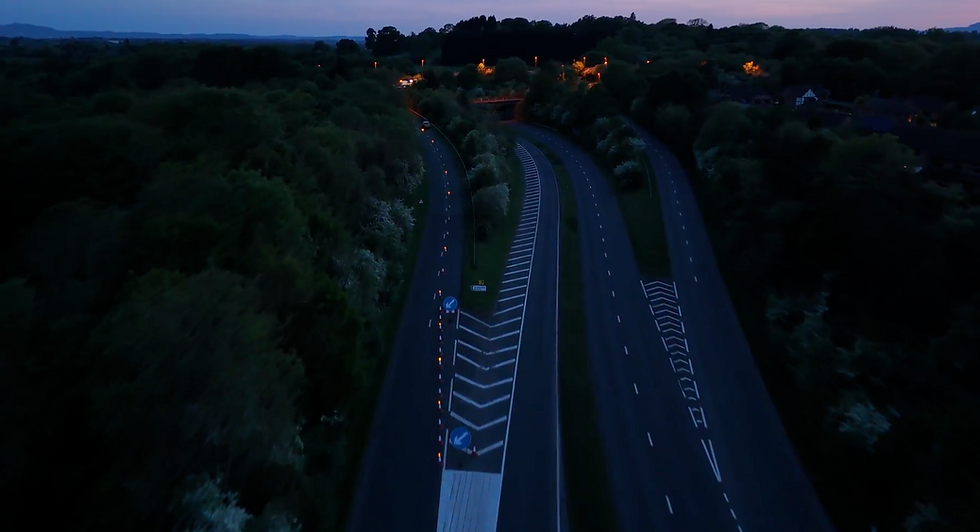How Lane Closures are Planned for Maximum Efficiency
- Beaumont TM

- Aug 11
- 3 min read

When roadworks are needed, lane closures are often unavoidable. While these temporary measures can sometimes be seen as an inconvenience, they are absolutely vital for keeping road workers, drivers, and pedestrians safe. At Beaumont Traffic Management, we understand the importance of not only protecting everyone on the road, but also minimising disruption and ensuring traffic keeps moving as smoothly as possible.
A well-planned lane closure is like a finely tuned operation — it requires strategy, coordination, and precision. Here’s how we ensure every closure we deliver is both safe and efficient.
Step 1: Understanding the Project Scope
Every successful lane closure starts with a clear picture of the works being carried out. This is much more than simply knowing the date and location. We work closely with our clients to establish:
Important considerations - Is a TTRO required? Do we need to close parking bays, suspend bus stops etc
The exact road type – whether we’re working on a busy motorway, a dual carriageway, or a smaller urban road, each comes with its own set of challenges and regulations
The nature of the works – from resurfacing to bridge maintenance, from utility installations to heavy load movements, each job demands different traffic management considerations.
Project timelines and critical deadlines – knowing when work must start and finish helps us develop an efficient traffic plan that supports both the crew’s needs and the public’s convenience e.g. changing start dates to work during off peak times such as school holidays
By fully understanding the scope, we can tailor the lane closure to be both compliant and practical.
Step 2: Traffic Flow Analysis
Timing is everything when it comes to lane closures. Our planners study traffic flow data, historical congestion patterns, and even local events to choose the most suitable times for the work. This often means:
Scheduling lane closures overnight to avoid peak-hour traffic
Staging works so fewer lanes are closed at any one time
Adjusting closure timings if large public events or holiday traffic are expected
The goal is always the same — keep the road as open as possible for as long as possible, without compromising safety.
Step 3: Designing the Lane Closure Layout
This is where our technical expertise really comes into play. Using specialist software and working to Chapter 8 and local authority standards, our team designs detailed closure layouts that ensure:
Drivers have plenty of warning – clear, visible signage is placed well in advance so motorists can react safely and calmly.
Safe taper lengths – allowing traffic to merge smoothly without sudden braking or swerving.
Appropriate working space – ensuring the safety of the crew without unnecessarily reducing the available road space.
Consideration for all road users – including cyclists, pedestrians, and public transport routes.
Every design is carefully reviewed to ensure it is both safe and efficient before it is submitted for approval.
Step 4: Coordination with Stakeholders
A lane closure rarely happens in isolation — it can affect emergency services, public transport, local residents, businesses and schools. That’s why we liaise with:
Local councils for permits and compliance checks
Emergency services to guarantee access routes are maintained at all times
Bus and coach operators to avoid unnecessary disruption to services
Local communities via advance notice letters, signage, and public information campaigns
Proactive communication is key to avoiding confusion and keeping everyone informed.
Step 5: Efficient Deployment and Monitoring
On the day of the closure, efficiency is crucial. Our experienced crews work quickly to set up the closure using well-maintained vehicles, cones, barriers, and signage. Throughout the works, our teams carry out regular monitoring to:
Ensure all signs and equipment remain in place and visible
Make adjustments if traffic conditions change unexpectedly
Reopen lanes as soon as it’s safe to do so, rather than waiting until the planned end time
This constant monitoring means we can respond quickly, keeping disruption to an absolute minimum.
Step 6: Review and Continuous Improvement
Once the works are complete, we conduct a thorough review with our client. We assess:
Traffic flow performance during the closure
Any incidents or near misses
Feedback from stakeholders
Opportunities for improvement in future projects
These reviews are an essential part of our commitment to continuous improvement — making every closure more efficient than the last.
We see lane closures not as a roadblock, but as a carefully engineered safety solution.
With the right planning, communication, and expertise, they can be delivered in a way that protects people, meets project deadlines, and keeps traffic moving.
Have a project coming up that needs lane closures? Contact our team today to see how we can deliver a traffic management solution tailored to your needs.











Comments